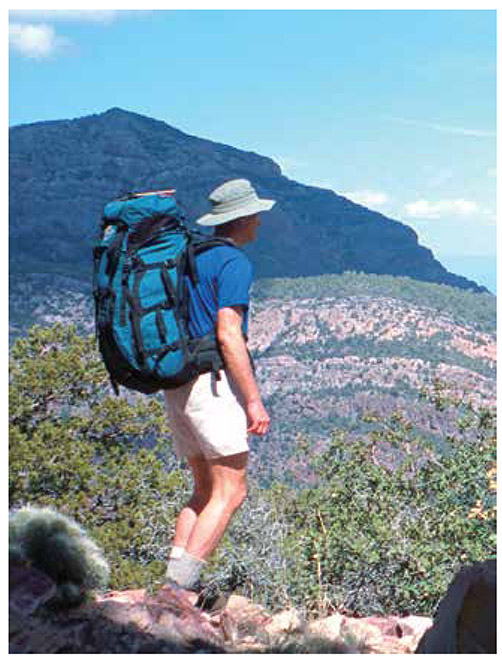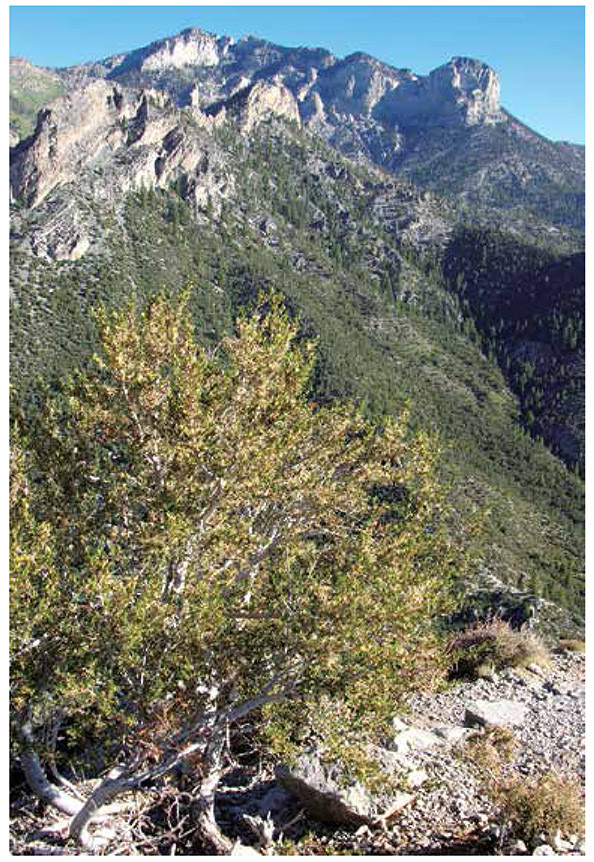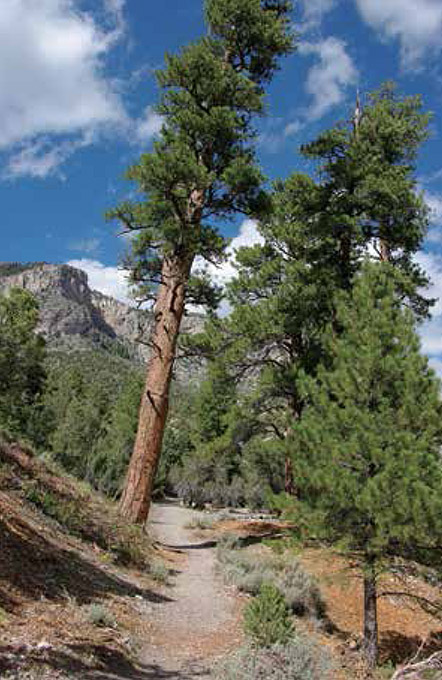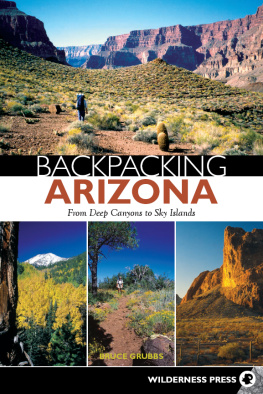Bruce Grubbs - Best Hikes Las Vegas
Here you can read online Bruce Grubbs - Best Hikes Las Vegas full text of the book (entire story) in english for free. Download pdf and epub, get meaning, cover and reviews about this ebook. year: 2020, publisher: Falcon Guides, genre: Children. Description of the work, (preface) as well as reviews are available. Best literature library LitArk.com created for fans of good reading and offers a wide selection of genres:
Romance novel
Science fiction
Adventure
Detective
Science
History
Home and family
Prose
Art
Politics
Computer
Non-fiction
Religion
Business
Children
Humor
Choose a favorite category and find really read worthwhile books. Enjoy immersion in the world of imagination, feel the emotions of the characters or learn something new for yourself, make an fascinating discovery.

- Book:Best Hikes Las Vegas
- Author:
- Publisher:Falcon Guides
- Genre:
- Year:2020
- Rating:3 / 5
- Favourites:Add to favourites
- Your mark:
- 60
- 1
- 2
- 3
- 4
- 5
Best Hikes Las Vegas: summary, description and annotation
We offer to read an annotation, description, summary or preface (depends on what the author of the book "Best Hikes Las Vegas" wrote himself). If you haven't found the necessary information about the book — write in the comments, we will try to find it.
Best Hikes Las Vegas — read online for free the complete book (whole text) full work
Below is the text of the book, divided by pages. System saving the place of the last page read, allows you to conveniently read the book "Best Hikes Las Vegas" online for free, without having to search again every time where you left off. Put a bookmark, and you can go to the page where you finished reading at any time.
Font size:
Interval:
Bookmark:

Bruce Grubbs has a serious problem: He doesnt know what he wants to do when he grows up. Meanwhile, hes done such things as wildland firefighting, running a mountain shop, flying airplanes, shooting photos, and writing books. Hes a backcountry skier, climber, figure skater, mountain biker, amateur radio operator, river runner, and sea kayakerbut the thing that really floats his boat is hiking and backpacking. No matter what else he tries, the author always come back to hikingespecially long, rough, cross-country trips in places like the Grand Canyon. Some people never learn. But what little he has learned, hes willing share with youvia his books, of course, but also via his website, blogs, and whatever else works. His website is BruceGrubbs.com.
Id like to thank Duart Martin for encouraging this project at every step and putting up with my absences while I mapped the trails and shot the photos. Thank you to Lee Kirkland, Red Rock Canyon National Conservation Area, for reviewing the manuscript. Thanks to my editors, John Burbidge and Mason Gadd, as well as Melissa Baker, map coordinator, for turning my rough manuscript into another polished FalconGuide.

From the summit of Cathedral Rock, youll enjoy a panoramic view of Kyle Canyon, including the cliff-bound summit of Mummy Mountain.
B y far the most dramatic mountain range in southern Nevada, the Spring Mountains rise nearly 2 miles above the surrounding desert valleys and reach 11,811 feet at Charleston Peak. From this and other 11,000-foot summits in the range, the view extends more than 200 miles, often including the 14,000-foot Sierra Nevada in California. The range starts near the California border and runs 80 miles to the north and northwest, forming the western skyline for Las Vegas.

Charleston Peak, flanked by the ridges above Kyle Canyon, is seen from Griffith Peak.
GREEN TIP:
When hiking with your dog, stay in the center of the path and keep Fido close by. Dogs that run loose can harm fragile soils and spread pesky plants by carrying their seeds. Never let your dog run up to other hikers, no matter how friendly it is. Some people have had bad experiences with dogs and do not appreciate dogs running up to them.
The Spring Mountains have long been the summer retreat for the desert dwellers of Las Vegas and other nearby towns. While the desert cities roast in summer heat of over 100 degrees Fahrenheit, the peaks, canyons, and trails of the Spring Mountains are as much as 50 degrees cooler. And in the winter, heavy snowfall makes winter recreation possible, including cross-country skiing and snowshoeing. Many of the trails in this book are great winter snowshoeing routes.
The Spring Mountains were named for the numerous springs that occur throughout the range. Known to locals as the Mount Charleston area, the Spring Mountains cover a much larger area than most people realize. Although smaller ranges and areas such as the La Madre Mountains and Red Rock Canyon area are actually part of the Spring Mountains, this section focuses on the portion included in the Spring Mountains National Recreation Area, which is the northwestern section containing the highest peaks. Just to clear up some confusion, Mount Charleston is the name of the village at the head of Kyle Canyon, while the summit of the range is Charleston Peak. Kyle Canyon is such a dramatic location, with its towering limestone cliffs, that many people assume that glaciers carved this deep canyon. Actually, theres no evidence of glacial activity in the Spring Mountains, but the mountains still have an alpine aspect that is especially appealing in contrast to the surrounding desert. Its all part of the contrasts that make hiking around Las Vegas so great.
This hike starts just down the road from the Spring Mountains Visitor Center and is a perfect first hike for those new to the Spring Mountains. It features a beautiful forested canyon, a seasonal spring, a narrow limestone slot canyon, and wilderness solitudeall within 2.0 miles of the busy Kyle Canyon Road.
Start: 37.0 miles northwest of Las Vegas
Distance: 3.6 miles out and back
Approximate hiking time: 2 hours
Difficulty: Moderate due to 770-foot elevation change
Trail surface: Dirt and rocks, some steep sections of unmaintained trail, and some rock scrambling beyond Fletcher Spring
Best seasons: Spring through fall
Water: Fletcher Spring
Other trail users: Horses
Canine compatibility: Leashed dogs permitted
Fees and permits: None
Schedule: Open all hours
Maps: USGS Angel Peak
Trail contacts: Spring Mountains National Recreation Area, Humboldt-Toiyabe National Forest, 4701 N. Torrey Pines Dr., Las Vegas 89130-2301; (702) 872-5486; https://www.fs.usda.gov/htnf
Finding the trailhead: From the intersection of US 95 and I-15 in downtown Las Vegas, drive northwest on US 95 16.7 miles. Turn left on NV 157, the Kyle Canyon Road. Continue 18.0 miles to the trailhead on the right side of the highway. There is additional parking along the left side of the highway. GPS: N36 15.813' / W115 36.699'
Follow the Fletcher Canyon Trail through open stands of mixed ponderosa pine, pion pine, and juniper into the open mouth of Fletcher Canyon. Along the first 100 yards of the trail, you may notice a lack of underbrush and small trees. This is because of an ongoing USDA Forest Service thinning project that is taking place along the upper portion of the Kyle Canyon Road. Crews are removing brush and small trees to reduce the intensity of wildfires along the highway. Popular roads such as this one are common points of origin for fires due to careless people throwing cigarettes and other burning material out of their cars. In steep terrain such as Kyle Canyon, wildfires can quickly grow in size and rate of spread as the fire encounters steeper slopes and heavier vegetation. Logs, brush, and small trees burn especially fast. In the right conditions Kyle Canyon could act like a chimney, directing an intense wildfire up the canyon and endangering people and structures. Since the best way to prevent a wildfire from becoming large and difficult to control is to catch it while its small, the thinning project aims to reduce the amount of fuel along the highway so that crews can build control lines and contain fires.
Never camp near an isolated spring or water source. Aside from the possibility of contamination due to human activity, your presence prevents wildlife from getting to the water.

Mature ponderosa pines can be found along the Fletcher Canyon Trail. These pines can reach 600 years in age.
The trail crosses the dry stream-bed and stays on the north side of the drainage, climbing steadily. After you pass the signed wilderness boundary, watch for sections of the old pipeline that brought water down the canyon from Fletcher Spring. At a point where a trickle of water sometimes surfaces, the canyon narrows and the trail crosses to the south side and does several short, steep climbs. The maintained trail ends at Fletcher Spring, but you can walk on up the bed through an impressive narrows in the limestone. The walls tower 100 to 200 feet above the bed, and narrow to as little as 5 feet wide. A few easy scrambles lead over chockstones in the stream-bed. Youll come to a slightly more open spot where a side canyon comes in from the left. Stay right and climb the last hundred yards to a seasonal waterfall.
Font size:
Interval:
Bookmark:
Similar books «Best Hikes Las Vegas»
Look at similar books to Best Hikes Las Vegas. We have selected literature similar in name and meaning in the hope of providing readers with more options to find new, interesting, not yet read works.
Discussion, reviews of the book Best Hikes Las Vegas and just readers' own opinions. Leave your comments, write what you think about the work, its meaning or the main characters. Specify what exactly you liked and what you didn't like, and why you think so.



